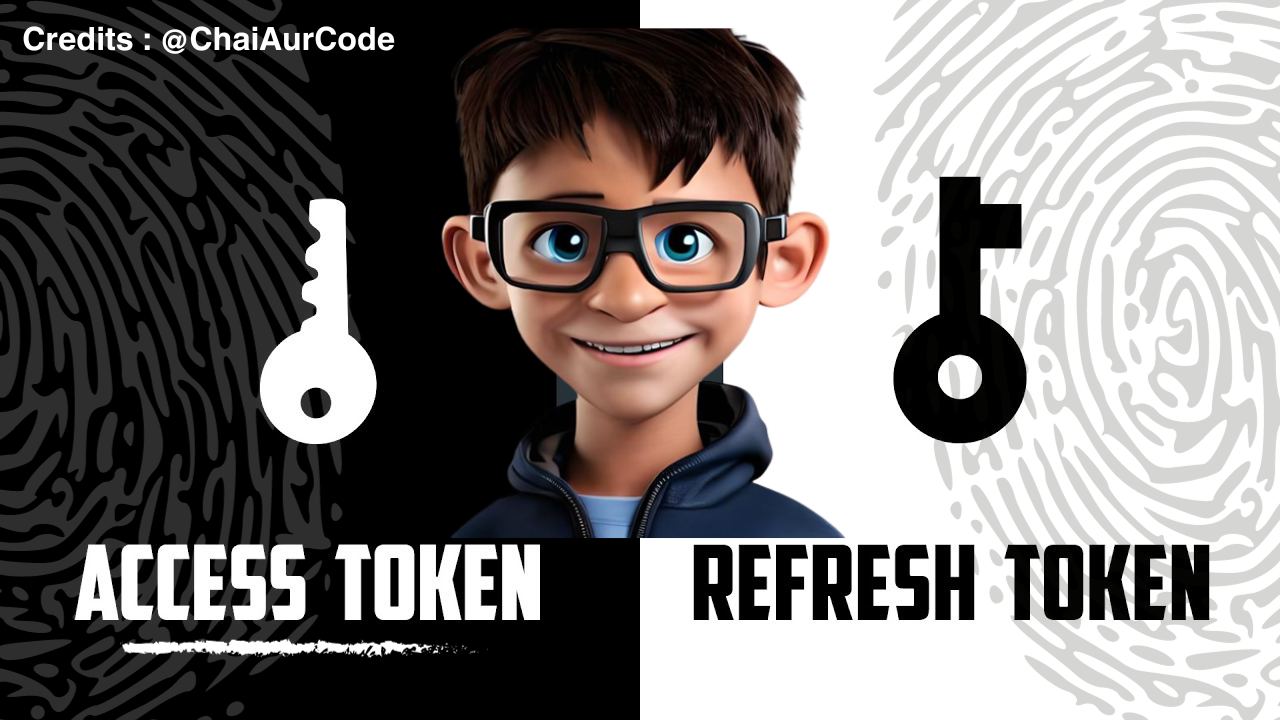Understanding the Authorization Flow of Access Tokens and Refresh Tokens
 Rohit Bhatade
Rohit Bhatade
In the world of web development, mastering the foundation is key. Following Hitesh Choudhary Sir's YouTube channel, ChaiAurCode, has been instrumental in building a strong understanding, especially with the JavaScript playlist. In one of the recent videos from the Backend playlist, the intricate process of utilizing Access Tokens and Refresh Tokens was explained. Let's dive deeper into this process through a comprehensive tree structure flow for a clearer understanding.
User Login:
User submits credentials (username/password).
Server validates credentials.
Server generates and returns an Access Token and a Refresh Token.
[Success] └─> Access Token └─> Refresh Token [Failure] └─> Error Response
Accessing Protected Resource:
User includes the Access Token in the Authorization header of the request.
Server verifies the Access Token.
[Valid Access Token] └─> Allow access to the protected resource. [Expired or Invalid Access Token] └─> Request a new Access Token using the Refresh Token.
Refreshing Access Token:
User includes the Refresh Token in a request to the token refresh endpoint.
Server verifies the Refresh Token.
[Valid Refresh Token] └─> Server generates and returns a new Access Token. [Expired or Invalid Refresh Token] └─> User is required to log in again.
Logging Out:
User logs out.
Server may invalidate the Refresh Token on the server side.
[Success] └─> Log out completed. [Failure] └─> Error Response
Token Expiry:
Access Tokens have a short expiration time (e.g., 15 minutes).
Refresh Tokens have a longer expiration time.
[Access Token Expired] └─> Request a new Access Token using the Refresh Token. [Refresh Token Expired] └─> User is required to log in again.
Token Revocation (Optional):
Server may implement token revocation if needed (e.g., log out from multiple devices).
[Revocation Request] └─> Invalidate associated tokens. [Success] └─> Tokens invalidated. [Failure] └─> Error Response
In this flow:
Access Token: A short-lived token granting access to protected resources. Its shorter lifespan (e.g., 15 minutes) enhances security.
Refresh Token: A longer-lived token used to acquire a new Access Token without reauthentication. It's securely stored on the client side and has an extended expiration time.
This flow meticulously balances security and user experience. Access Tokens offer short-term access while Refresh Tokens enable longer sessions without compromising security. Regular usage of short-lived Access Tokens mitigates risks associated with potential Refresh Token compromises, ensuring a robust and secure authorization process. For further exploration in web development, ChaiAurCode is a valuable resource to delve into new technologies and advancements.
Subscribe to my newsletter
Read articles from Rohit Bhatade directly inside your inbox. Subscribe to the newsletter, and don't miss out.
Written by
